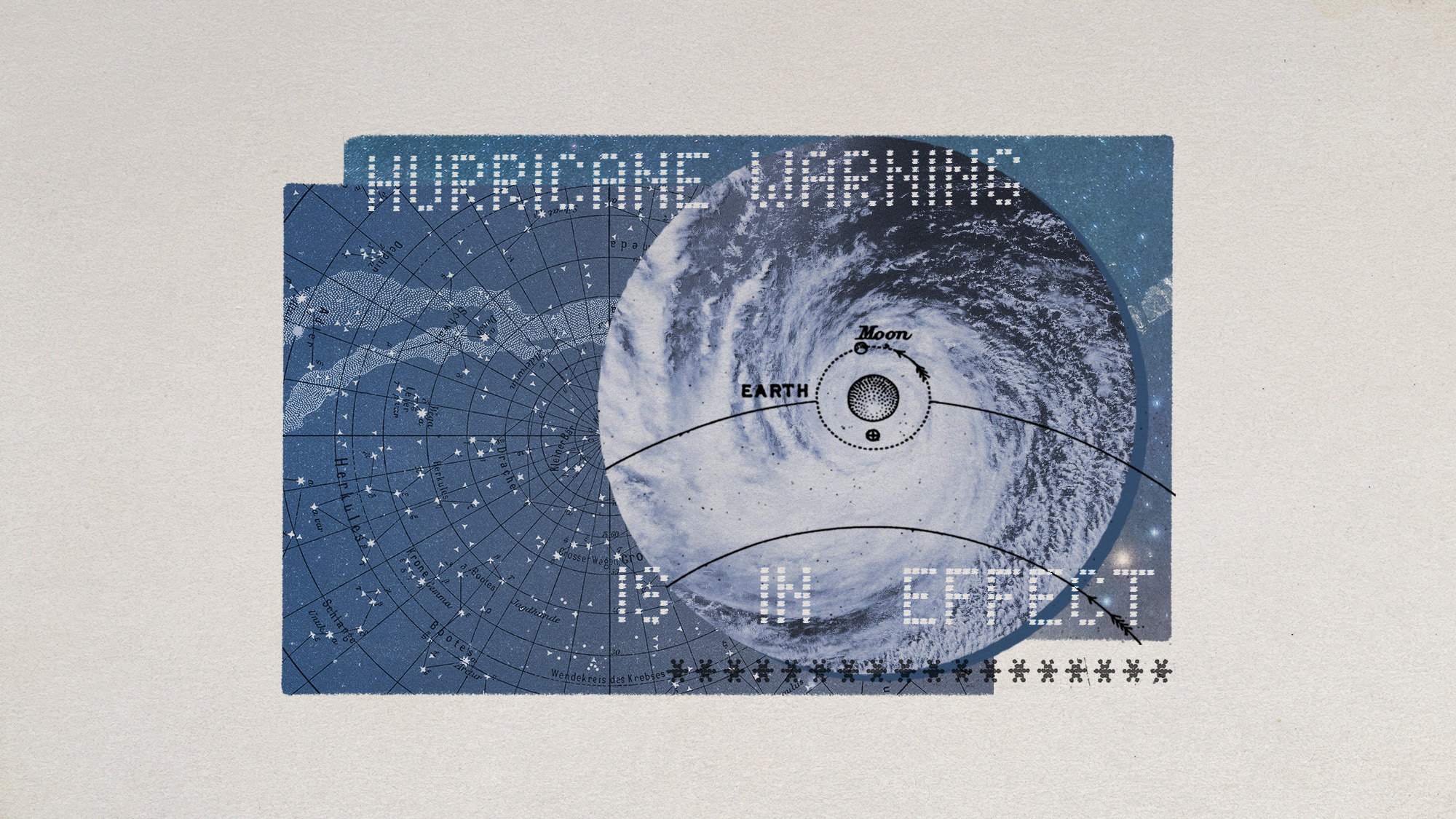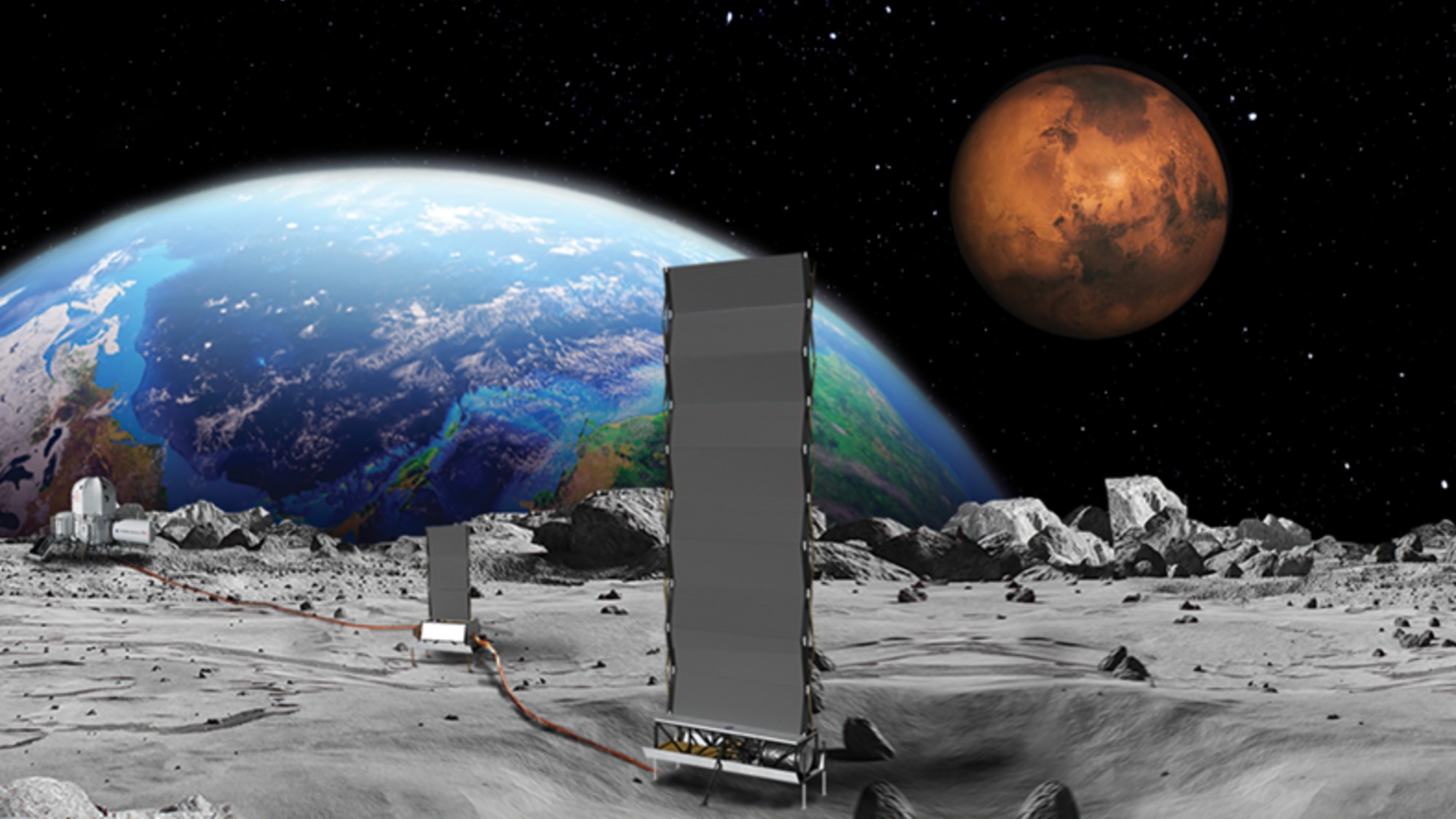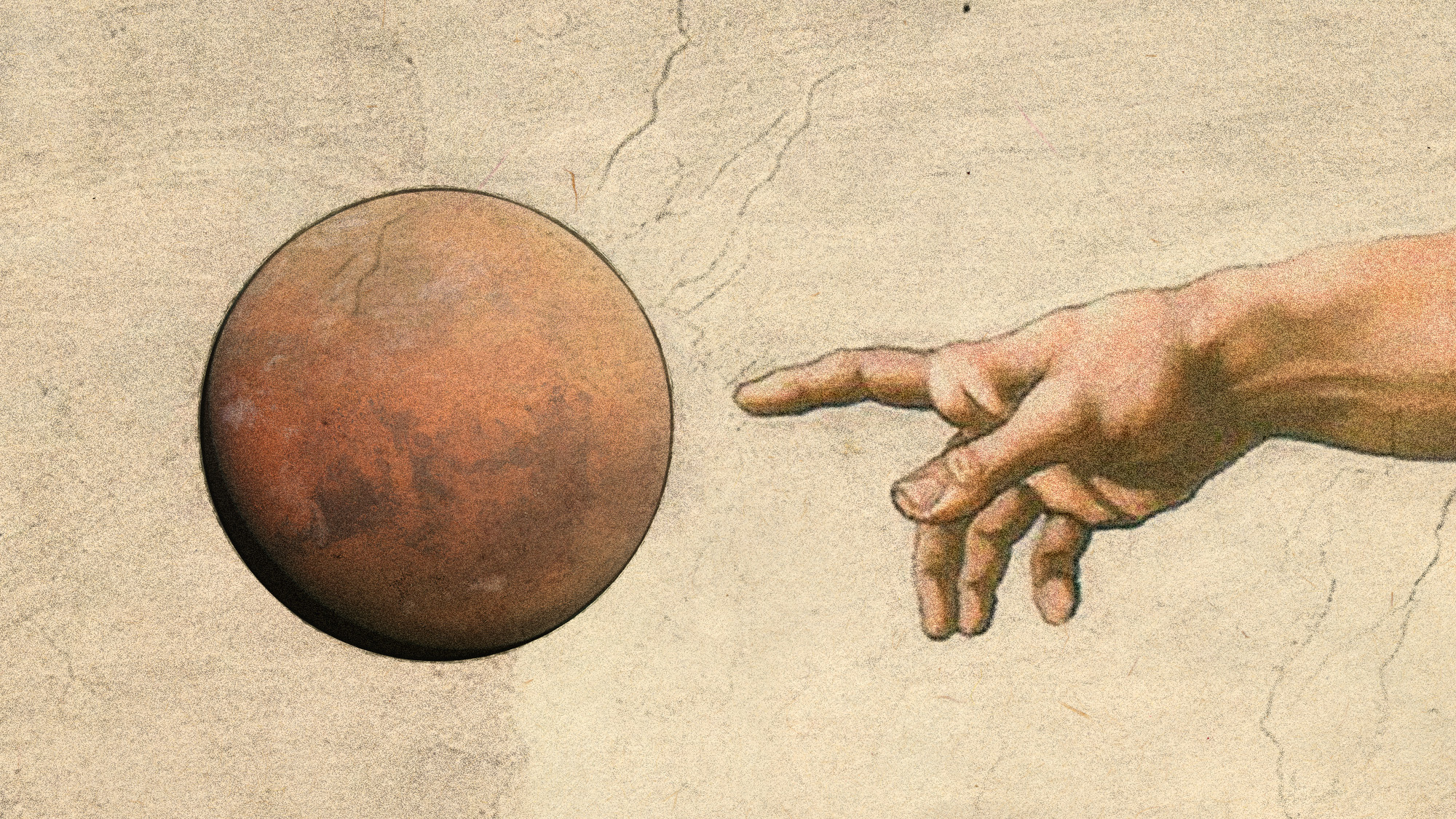Pros and cons of sending people to the Moon
Development of new technologies and vital research must be offset by cost and climate considerations

Nasa’s long-awaited and much-delayed Artemis mission that will eventually land humans back on the Moon has been pushed back again until the end of the month, the US space agency has confirmed.
The launch of Artemis 1, which will carry the world’s most powerful rocket as well as the unmanned Orion spacecraft beyond the Moon, was called off at the last minute in August after concerns about a fuel leak and engine cooling issues.
With it finally set to go ahead on 27 September, the overdue and over-budget project is once again drawing criticism that its ultimate goal of establishing a permanent populated base on the Moon is not worth the cost or effort. Others, however, disagree.
The Week
Escape your echo chamber. Get the facts behind the news, plus analysis from multiple perspectives.

Sign up for The Week's Free Newsletters
From our morning news briefing to a weekly Good News Newsletter, get the best of The Week delivered directly to your inbox.
From our morning news briefing to a weekly Good News Newsletter, get the best of The Week delivered directly to your inbox.
1. Pro: developing new technologies
When US President John F. Kennedy made the pledge in 1962 to send an astronaut to the Moon and bring them back by the end of the decade, a lot of the technology and knowledge needed to do so did not exist. Many of the advances developed for the Apollo missions are still in commercial use today including digital flight controls integral to most planes and cars, space blankets, earthquake-proofing in buildings and bridges, and rechargeable batteries to name just a few.
“Technology created for Artemis will certainly find secondary applications on Earth,” said Mike DiCicco, of Nasa’s Goddard Space Flight Center, as well as “enabling a new economy in space”.
For example, he said, to “extract resources from the lunar surface” scientists will need to “turn frozen water locked in the Moon’s surface into drinkable water, breathable oxygen and usable rocket fuel”. This could have widespread practical implications back on Earth.
“Finally, the mission architecture itself – rocket and capsule, surface modules, spacecraft that will ferry astronauts to and from the lunar surface, and all the technology that enables sustainable operations on the Moon – is a test bed for humanity’s next great leap – sending astronauts to Mars,” he said.
A free daily email with the biggest news stories of the day – and the best features from TheWeek.com
2. Con: high costs
The prohibitively high cost of landing someone on the Moon, let alone sustaining a permanent colony, is by far the biggest argument against attempting to repeat the feat of the Apollo missions.
It is estimated the Artemis programme will cost US taxpayers $93bn. While staggeringly high, this pales in comparison to the total cost of the Apollo missions, which at a time of great social and political upheaval in the US are estimated to have cost the equivalent of $288.1bn today, according to analysis by the Planetary Society.
A far cheaper option than landing humans on the Moon is sending robots. In contrast to manned flights, “automated spacecraft require only a power supply”, argued Scientific American. “They cost far less than humans do, and we know how to improve them every year. And if they fail, we lose only dollars and scientific results.”
3. Pro: paying for itself
While undoubtedly expensive, some argue going to the Moon could eventually pay for itself and even return a profit. Citing “vast reserves of Helium-3 just sitting on the surface of the Moon”, Universe Today said: “This material is rare on Earth, and could be used for future fusion energy planets. Not to mention other valuable minerals and elements that might just be lying around, ready for collection and used for space-based manufacturing.”
Forbes argued back in 2020 that Nasa’s planned return to the Moon was “the bargain of the century”. The discovery of water at the lunar south pole, confirmed by Nasa in 2018, would make a crewed Moon base possible, said the magazine, with hydrogen and oxygen refined into high-efficiency rocket fuel. “Rockets wouldn’t have to use fuel just to get the fuel for their entire trip off the surface of the Earth,” it argued. “Launch costs would plummet; a ‘lunar economy’ could be created and space mining could become possible – a resources boom could follow.”
4. Con: climate concerns
While environmental impact often comes after financial and scientific considerations, there is growing unease at the cost to the climate of an ever-increasing number of space launches.
“When rockets launch into space, they require a huge amount of propellants to make it out of the Earth’s atmosphere,” said The Guardian. Nasa’s rockets, for example, require liquid hydrogen, which emits “a variety of substances into the atmosphere, including carbon dioxide, water, chlorine and other chemicals”.
Furthermore “emissions from rockets are emitted right into the upper atmosphere, which means they stay there for a long time: two to three years”, said the paper. “Even water injected into the upper atmosphere – where it can form clouds – can have warming impacts.”
This ongoing pollution is a huge concern to scientists, said Space.com. “Just as the current climate crisis started relatively slowly as the amount of carbon released into the atmosphere grew, the pollution in the stratosphere may only start causing harm some years down the road.”
The Atlantic asked: “How, in the coming years, might the government convince Americans that exploring another planet is worth it as climate change transforms their own?”
5. Pro: inspiring students
“One of the biggest benefits of going back to the moon would be the continued scientific exploration of Earth’s only satellite,” said Sciencing. “The six missions that landed on the Moon only explored a few square miles of the lunar surface, and much of that examination was cursory at best,” said the science news site.
More lunar missions would provide valuable information on the mineral history of the Moon, which remains largely unknown, while further exploration would answer many questions about the Moon’s formation and early history.
“Beyond any scientific returns,” the original Apollo mission “elevated the human spirit”, argued Scientific American, as we all “became astronomers with a deep passion to explore the cosmos”. More specifically, the lunar landings half a century ago inspired a new generation to pursue the STEM subjects – science, technology, engineering and maths – and it is hoped the huge publicity around the latest Artemis mission will do the same.
6. Con: a new ‘Moon race’
“The space race is not over,” said Netivist. Growing competition means that “sovereignty over other planets and satellites, and over their resources, will become a controversial issue”.
Last year China and Russia announced a joint plan to build a research station on the Moon, raising security concerns among Western analysts and warnings from Nasa about Beijing’s lunar ambitions in particular.
More than 20 countries have signed the US-initiated Artemis Accords, a set of guidelines that govern exploration of the Moon, Mars and beyond. But other countries are following their own programmes.
“The biggest risk is you have two opposite set of rules,” Malcolm Davis, from the Australian Strategic Policy Institute in Canberra, told The Indian Express. “You could have a Chinese company on the moon in the 2030s claiming territory with a resource on it, in the same way the Chinese have claimed the entire South China Sea.”
The geopolitical competition for the Earth’s diminishing resources looks like it could be repeated in space, “pitting the US and its allies against China and Russia”, said The Indian Express. “Their inability to cooperate on space risks not only an arms race, but also clashes over extracting potentially hundreds of billions of dollars’ worth of resources on the Moon and elsewhere.”
-
 Turner Prize 2025: ‘artistic excellence’ or ‘cultural nonsense’?
Turner Prize 2025: ‘artistic excellence’ or ‘cultural nonsense’?Talking Point Work by the four artists nominated for this year’s award is on display at Bradford’s Cartwright Hall
-
 Man vs Baby: Rowan Atkinson stars in an accidental adoption comedy
Man vs Baby: Rowan Atkinson stars in an accidental adoption comedyTalking Point Sequel to Man vs Bee is ‘nauseatingly schmaltzy’
-
 Goodbye June: Kate Winslet’s directorial debut feels like a ‘John Lewis Christmas TV ad’
Goodbye June: Kate Winslet’s directorial debut feels like a ‘John Lewis Christmas TV ad’Talking Point Helen Mirren stars as the terminally ill English matriarch in this sentimental festive heartwarmer
-
 Blue Origin launches Mars probes in NASA debut
Blue Origin launches Mars probes in NASA debutSpeed Read The New Glenn rocket is carrying small twin spacecraft toward Mars as part of NASA’s Escapade mission
-
 ‘The Big Crunch’: why science is divided over the future of the universe
‘The Big Crunch’: why science is divided over the future of the universeThe Explainer New study upends the prevailing theory about dark matter and says it is weakening
-
 The moon is rusting
The moon is rustingUnder the radar The Earth is likely to blame
-
 Panspermia: the theory that life was sent to Earth by aliens
Panspermia: the theory that life was sent to Earth by aliensUnder The Radar New findings have resurfaced an old, controversial idea
-
 Africa could become the next frontier for space programs
Africa could become the next frontier for space programsThe Explainer China and the US are both working on space applications for Africa
-
 Hurricanes are not exclusive to Earth. They can happen in space.
Hurricanes are not exclusive to Earth. They can happen in space.Under the radar These storms may cause navigational problems
-
 Why does the US want to put nuclear reactors on the moon?
Why does the US want to put nuclear reactors on the moon?Today's Big Question The plans come as NASA is facing significant budget cuts
-
 Answers to how life on Earth began could be stuck on Mars
Answers to how life on Earth began could be stuck on MarsUnder the Radar Donald Trump plans to scrap Nasa's Mars Sample Return mission – stranding test tubes on the Red Planet and ceding potentially valuable information to China